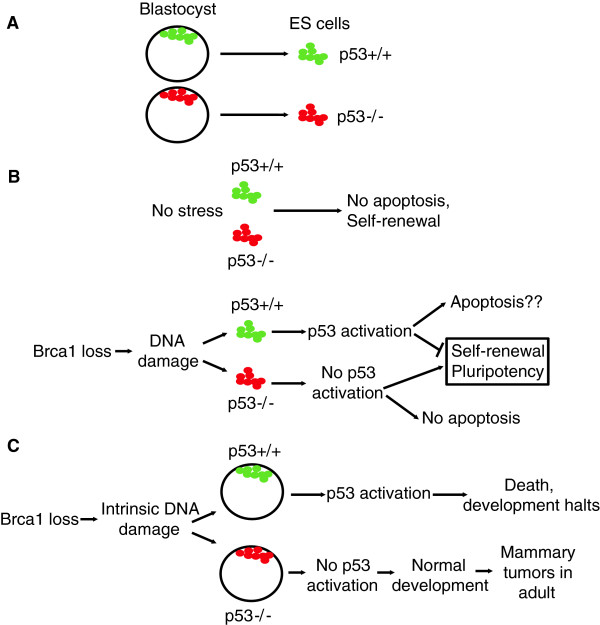Figure 1.
The roles of p53 in ES cells and blastocysts. A, Mouse ES cells (in vitro) are derived from blastocysts (in vivo) at embryonic day 3.5. B, In the absence of stress, p53 is inactive in ES cells. But it can be activated by exogenous or endogenous stresses, such as DNA damage, in mES cells. For example, the loss of Brca1 causes endogenous DNA damage stress, which in turn activates p53 to elicit differentiation and apoptosis of mES cells. C, A hypomorphic Brca1 mutant causes DNA damage in blastocysts. When p53 is intact, the DNA damage signal will activate p53 and cause the death of the blastocyst. Therefore, the developmental process is canceled. When the p53 surveillance system fails, the developmental process goes on, while the female mice develop mammary gland tumors in adulthood.

